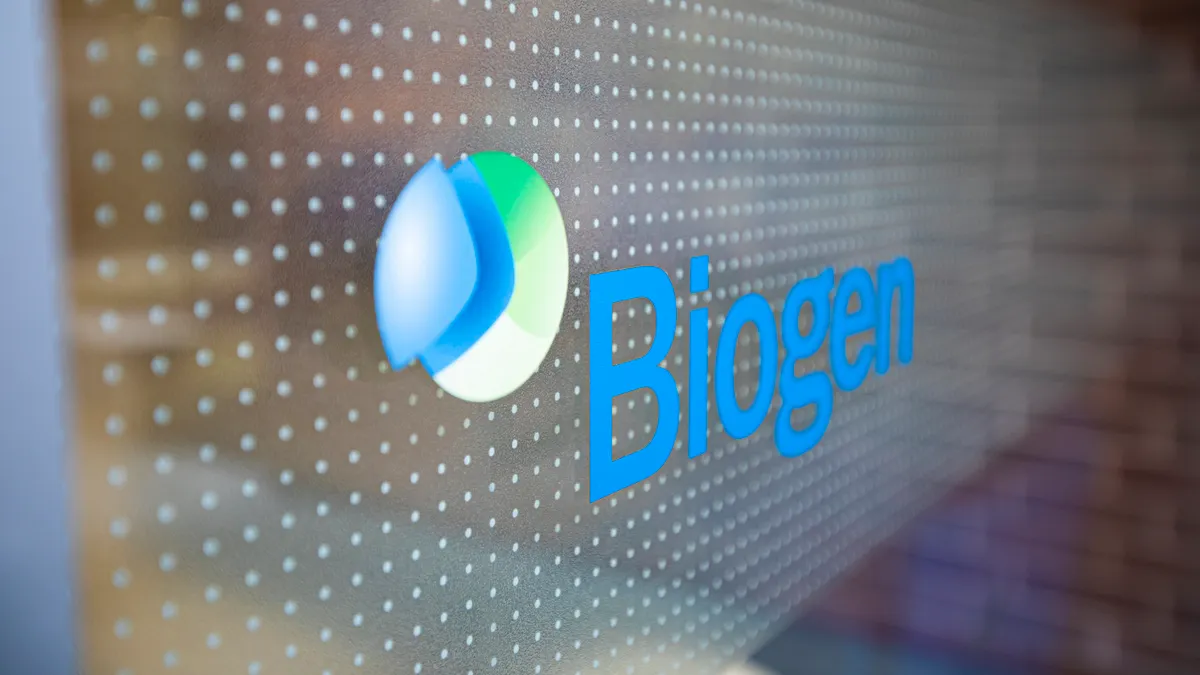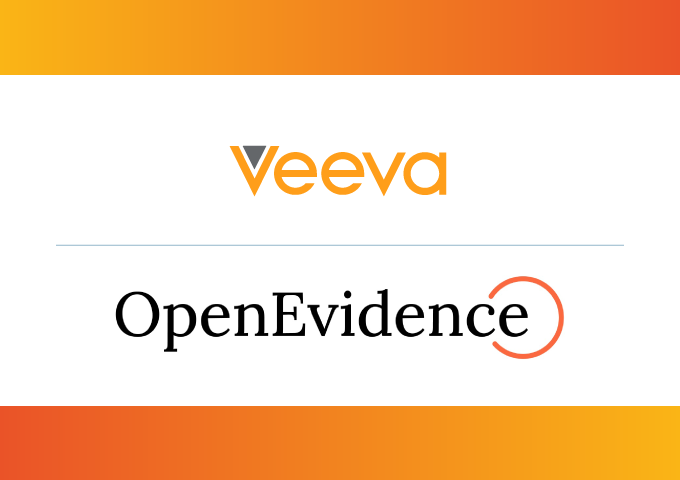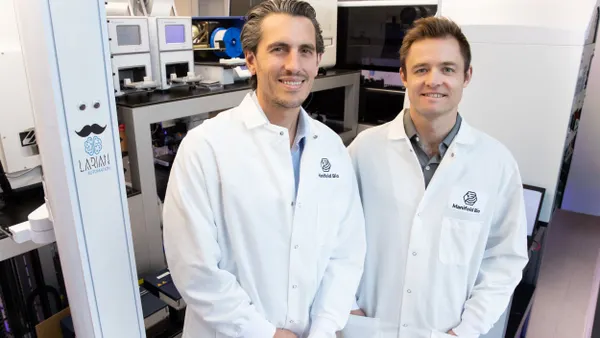Virtual Research Comes of Age By Denise Myshko Through predictive biosimulation technologies that replicate experiments in a computer, companies are starting to reduce the time it takes to identify possible drug targets. IImagine having better information about the safety and effectiveness of product candidates faster and at lower costs. Imagine having to do fewer clinical trials to determine dosing or to demonstrate safety and efficacy. Computational biologists and other researchers are working hard to make this vision a reality. As biomedical knowledge increases and bioinformatics capabilities grow, there is hope that greater predictive power may be obtained from in silico, in other words computer modeling, analyses. Although the full benefits of biosimulation may be 10 years away, the payoff is big: shorter development cycles, as well as the ability to design better drug leads that have lower toxicity and that reach the right biological targets. “Everyone thinks, although no one has done it yet, that we ought to be able to build realistic, comprehensive, and explanatory models of mammalian cell-cycle regulation,” says John J. Tyson, Ph.D., professor of biology at Virginia Polytechnic Institute and State University. “We think we have proved the principal with simpler organisms such as yeast and we’re ready to move on to mammalian cells. I’m betting that when we have these accurate models, we will be able to predict in the computer how various drugs will interact.” A report by IBM Business Consulting Services in May 2004 suggested predictive biosimulation will be one of the technologies that will transform the industry in the future. Industry experts interviewed say in silico R&D can complement traditional laboratory-based research, increase productivity and efficiency, and overcome bottlenecks in target identification and validation, candidate selection and prioritization, and clinical development. Modeling and simulation can guide experimentation, helping researchers to understand key problems, focus research on productive pathways, and generate new ideas. “Simulation can give pharma companies an indication of whether the target is worthy of pursuing,” says Thomas Paterson, cofounder and senior VP of Entelos Inc. “Simulation brings clarity to our customers’ hypotheses by enhancing their understanding before actually running an experiment. We’re not replacing that process. We’re enhancing it, providing guidance to pharma companies about what the next key experiment should be.” In silico research is now considered an essential adjunct to bench experiments for modeling of compounds, structural analysis, predictive pathways, and targets, as well as for discovery, compound-target interactions, and molecular functions, according to researchers at Kalorama Information. “With in silico technology, companies can create a model of a molecule on the computer, based on a particular shape,” says Jack Gardner, an analyst with Kalorama Information. “They can do a 3-D drawing and then do in silico screening. There are also in silico applications that can be used for creating libraries.” Simulation can help companies deal with the many novel targets that are being discovered by genomics, says Richard Ho, M.D., Ph.D., head of medical informatics in drug discovery at Johnson & Johnson Pharmaceutical Research & Development LLC. “One problem with genomics is that there are so many targets now, and we don’t have enough time and resources to try them all,” Dr. Ho says. “We need some way to validate them. We also can use these models to understand the best biomarkers of response and determine the best time to apply an assay.” Mr. Paterson says biosimulation also can be used to better assess product candidates that never made it to clinical trials. “There is a long list of drugs that have fared well in animals but failed to demonstrate human efficacy,” he says. “It makes one wonder about the drugs that didn’t move forward in the pipeline, the ones that didn’t perform well in animals. Maybe these drugs could have been successful. The benefit is in reducing the reliance on animal modes for predicting human efficacy. This technology provides for a better understanding of target pathways within the broad physiologic context necessary to predict human clinical response.” The case for simulation Industry experts say a significant ROI can be realized from the use of modeling and simulation software tools in partnership with traditional experimentation. In July 2004, Life Science Insights released a survey of materials research scientists and engineers who experienced a cumulative ROI of between $3 and $9 for every $1 invested in these tools. The survey found that cost savings and financial benefits are gained from: fewer experimental resources wasted on failed experiments; efficiency gains leading to broader and deeper exploration of solutions and new products; financial gains by improving the time to market for new products; revenue gains from the rescue of stalled product development projects; and risk-management improvements through safety testing and failure analysis. In the pharmaceutical industry, companies could experience a ROI of between $2 and $3 for every $1 invested, estimates Michael Swenson, research manager of Life Science Insights. Some companies, Mr. Swenson says, may be using some in silico models and doing fewer experimental models, and these companies may experience smaller incremental gains in ROI as they invest and begin to use these technologies. Jody Porrazzo, Ph.D., director of econometric risk strategy at NiiS/APEX Group Holdings, says it is important for pharmaceutical companies to assess the benefit of simulation technologies on the entire development process. “A company needs to identify the processes that would be replaced and assess the product through the development process, as well as think about after-market considerations such as the formulary process,” she says. “We have the means to do this.” Johnson & Johnson Pharmaceutical Research & Development has achieved success with in silico. The company used Entelos’ PhysioLab, a virtual research environment where scientists have access to and visualize many biological variables through simulation to test hypotheses. To date, researchers have applied this technology in the areas of target validation, lead candidate selection, clinical-trial optimization, biomarker research, and product differentiation. For a Phase I trial, Johnson & Johnson researchers experienced a 40% reduction in time and a 66% reduction in the number of patients required for a first-in-class compound for the treatment of type 2 diabetes. “One of the Phase I trials in humans of normal volunteers was designed with a single ascending dose approach,” Dr. Ho says. “We worried about whether the drug might cause hypoglycemia and that was the reason for using a low dose. The information from the model suggested that even at the highest dose, there was not any significant risk of hypoglycemia.” Researchers redesigned that trial to use the higher dose instead of the lower dose. “Instead of six total patient arms, we ended up doing two, and essentially this gave us the same information,” Dr. Ho says. Mr. Paterson says by creating a mathematical model representation of human physiology and pathophysiology, scientists can conduct experiments in this virtual environment in support of pharma. Entelos researchers are working with the American Diabetes Association (ADA) to develop an in silico model of the non-obese diabetic (NOD) mouse, the primary animal model used by researchers to study type 1 diabetes. Entelos and ADA also have established the Diabetes Research Forum for pharma and biotech companies to share in new insights for type 2 diabetes. Researchers from Entelos also have worked with Roche Diagnostics’ scientists to investigate the relationship between 20 plasma measurements and insulin sensitivity in more than 60 virtual patients. Challenges for the life sciences In silico computerized tests can probably provide a good adjunct to conventional laboratory testing, Mr. Gardner says. “This is where the controversy comes in,” he says. “How good is good? If one were taking a test and got a score of 80% or 90%, that wouldn’t be too bad. But that isn’t good enough in many cases. And these computerized algorithms that predict performance of ADMETox (absorption, distribution, metabolism, excretion, and toxicity) are only 70% to 80% accurate.” Part of the problem, he says, is with the quality of the data. “Researchers can create the world’s most wonderful algorithm but if the basis of that data is a little shaky, they will have a wonderful algorithm that produces lousy results,” Mr. Gardner says. Critics of predictive biosimulation say there isn’t enough data about the human body to make simulations accurate, especially when the variability of patient response is considered. “The data that have been collected over the last 10 years or 20 years really have been toward identifying the pieces of how biology works,” says Andrew LeBeau, Ph.D., a senior scientist at ProSanos. “For simulation models, we need to know how the parts interact, for example, how a whole cell or even an extensive pathway works, and there isn’t enough quality data for that right now.” Dr. LeBeau says it might be another five or 10 years before there are enough data from proteomics initiatives to make this a reality. “There has not yet been a great deal of success in terms of the simulations,” he says. “Currently, the best chances for success lie with focused approaches targeted to areas where a combination of experimental and clinical data are available.” Martin Gerstel, chairman of Compugen Inc. and founder of Alza Corp., believes there is a great deal of misunderstanding about what is happening in life-sciences research today. “The fact that one can do partial ‘reverse engineering’ of the final products of life science (animals, plants, and other organisms) and that there are very sophisticated technologies (most of which were developed for other high-tech purposes and are now being applied to life science) make it appear to most observers that this is a well developed and understood science. In fact, scientists today are at the very earliest stages of beginning to understand life science at the molecular level,” Mr. Gerstel says. Mr. Paterson says, however, this is why modeling is so important for drug discovery. “These systems are designed to allow researchers to integrate all of the information we have about a disease,” he says. “It is precisely because we don’t know everything yet that modeling is useful. Because there are a lot of unanswered questions, companies are able to explore multiple hypotheses. We consider this as critical to addressing the gaps in our knowledge.” Mr. Gerstel says up until relatively recently, it was believed – and research was based on this belief – that one gene expressed one protein and that natural sense/antisense gene pairs were extremely rare in the human genome. “But now it is understood that alternative splicing is the rule and not the exception and that natural antisense exists throughout the human genome,” he says. “This is an important point since ‘genes express proteins’ is clearly the most basic concept underlying all of life science, similar to what ‘electrons move through a wire’ is for telecommunications and high-tech. And, of course, almost nothing is known about the vast majority of pathways proteins take and their interactions.” Mr. Gerstel says to gain a deeper understanding of life sciences – and therefore to begin to fulfill the promise of real medical breakthroughs for treating the most difficult diseases – more effort will need to be devoted to predictive modeling and hypothesis driven experimentation. “The power of this technique will only be realized as these scientists begin to work as an interactive team with experimental biologists,” he says. Dr. Tyson says 10 years ago the prediction was that researchers wouldn’t be able to develop an accurate, predictive model for yeast. “We are beginning to understand the complexities of life,” he says. “There are many things we don’t understand, and the scientific enterprise is always trying to push ahead. We have confidence that in some of these areas we can overcome this lack of understanding.” “Modeling allows us to perform more rigorous research than we can do in our heads,” Dr. Ho says. “We’re using the same tools but using them in a much more consistent and quantitative fashion. We can do it a lot faster because all the material is in the computer. In addition, the computer doesn’t have any of the bias that investigators might have.” The future for biosimulation The FDA is committed to assisting the industry in developing new tools for drug discovery and development. In March 2004, the agency issued its Critical Path white paper in which it identified in silico modeling as one of the opportunities to improve predictability and efficiency in drug discovery and development. FDA officials in the report say a new product development toolkit – containing powerful new scientific and technical methods, such as animal or computer-based predictive models, biomarkers for safety and effectiveness, and new clinical evaluation techniques – is needed to improve predictability and efficiency along the critical path from laboratory concept to commercial product. “In the future, there is going to be an element of artificial intelligence that’s going to apply to in silico technologies,” Mr. Gardner says. “The level of complexity with proteomics and genomics is going to require that we have smart computers that can learn and design. There are going to be better models created for every stage of drug development from synthesis all the way into clinical trials.” The trend in the coming years will be a move away from proprietary systems and toward less expensive platforms that enable scientists to use commodity hardware, Mr. Swenson says. “There is an effort to move from Unix platforms to Linux platforms,” he says. “There are also Windows-based tools available.” IBM and Accelrys Inc. in September 2004 announced plans for Accelrys to release a full suite of modeling and simulation tools for the Linux operating system. “The trend is to make these decision-making tools more broadly available to the people working in a lab so they’re making the best informed decisions possible, and that’s been enabled by the desktop PC,” says Scott Kahn, Ph.D., chief science officer at Accelrys. “These are powerful visualization devices and numerical evaluation devices.” Accelrys’ cheminformatics, bioinformatics, and matinformatics tools allow researchers to store, search, retrieve, and use critical data and information. Computational chemists, biologists, and geneticists can speed up target identification and characterization through gene sequence analysis, homology modeling, protein simulation, and X-ray and NMR structure determination. They can use drug-design software to identify and optimize lead compounds and predictive methods to develop and focus combinatorial libraries. “We provide tools to build a 3-D structure that allows chemists to evaluate certain protein families, what the selectivity might be, and give some clues on what types of molecules are good potential drugs against it,” Dr. Kahn says.F PharmaVoice welcomes comments about this rticle. E-mail us at [email protected]. Dr. John Tyson I’m betting that when we have accurate models, we will be able to predict in the computer how various drugs are going to interact with each other. A Dynamic and Rapidly Changing Market New products are being introduced at a rapid rate. New companies are being formed while others are being merged out of existence. Pharmaceutical and biotechnology companies are constantly re-evaluating whether to purchase Information technology products or develop their own. All this is happening against the backdrop of an uncertain economy, with many companies delaying major expenditures until the situation clarifies. According to a recent Kalorama survey of drug-discovery scientists: 92% are seeing increased data-management needs. 44% expect their data to grow more than 100% over the next year, and 16% expect more than 50% growth. 94% of them are involved in collaborations that include sharing research results and data. But the data-management strategies that are in place to handle this growth are not up to the challenge. 39% report having no data-management system at all, and another 18% have a home-grown system. 5% use a system from a commercial data-management supplier. There is clearly a huge opportunity for vendors to make inroads into this potential market. Source: Kalorama Information, New York. For more information, visit kaloramainformation.com. Martin Gerstel People do not understand that although life-sciences research is being pursued with sophisticated technology, the scientific understanding of life at the molecular level is still in its infancy. Dr. Jody Porrazzo A company that only looks out six months or three years is not looking far enough ahead. It is a mistake to limit our time lines. Dr. Andrew LeBeau There has not yet been a great deal of success in terms of simulations. There aren’t well-accepted, widely used models available despite a lot of hype. Informatics Market Growth and Estimated Size in 2007 by Product Area One of the hot areas in informatics is improved techniques for visualization and modeling. It is now routine to be able to display 3-D molecular models. Representations are dynamic. Full-motion video is now a reality. As these techniques become more refined, expect more accurate representations, providing improved efficiency for in silico work. Product Area 2003 Sales 2003 % Share 2007 Sales Annual ($ in millions) of Total Market ($ in millions) Growth Rate In silico modeling $250 38% $610 25% Cheminformatics $200 32% $330 18% Other bioinformatics $100 15% $210 20% Systems integration $100 15% $140 8% Total, all product areas $650 100% $1,290 20% Source: Kalorama Information, New York. For more information, visit kaloramainformation.com. Thomas Paterson The problem with an animal model is that it is not reflective of what happens in humans. Through biosimulation, we can help pharma companies create better animal models, thus reducing the need to do extensive animal testing. Jack Gardner. Analyst, Kalorama Information, New York; Kalorama Information provides worldwide business intelligence and syndicated market research in life sciences to decision makers in the pharmaceutical, biotechnology, medical-device, and diagnostics sectors. For more information, visit kaloramainformation.com. Martin S. Gerstel. Chairman, Compugen Inc., Jamesburg, N.J., and Founder of Alza Corp.; Compugen is a genomics-based drug and diagnostic discovery company that incorporates ideas and methods from mathematics, computer science, and physics into the disciplines of biology, organic chemistry, and medicine. For more information, visit cgen.com. Richard Ho, M.D., Ph.D. Head of Medical Informatics in Drug Discovery, Johnson & Johnson Pharmaceutical Research & Development LLC, La Jolla, Calif.; Johnson & Johnson Pharmaceutical Research & Development probes the frontiers of science in pursuit of new drugs, based on discrete molecular targets, in the areas of vascular research, neuroscience, metabolic diseases, immunology, reproductive health, oncology, virology, antimicrobials, and inflammation. For more information, visit jnjpharmarnd.com. Scott Kahn, Ph.D. Chief Science Officer, Accelrys Inc., San Diego; Accelrys is a computational science company, developing and delivering scientific software applications and services that help solve critical R&D problems. For more information, visit accelrys.com. Andrew LeBeau, Ph.D. Senior Scientist, ProSanos Corp., La Jolla, Calif.; ProSanos provides disease-specific analytical products and services for pharmaceutical, biotechnology, and diagnostics companies, as well as for government, researchers, and healthcare providers. For more information, visit prosanos.com. Thomas Paterson. Cofounder and Senior VP, Entelos Inc., Foster City, Calif.; Entelos provides predictive biosimulation for in silico drug discovery and development, providing integrated expertise in the metabolic, immunologic, and respiratory areas. For more information, visit entelos.com. Jody Porrazzo, Ph.D. Director of Econometric Risk Strategy, NiiS/APEX Group Holdings, Princeton, N.J.; NiiS/APEX, a division of Gallagher Benefit Services Inc., is a consulting and insurance services organization that specializes in actuarial, underwriting, claims management, and audit services. For more information, visit niis-apex.com. Michael Swenson. Research Manager, Life Science Insights, Framingham, Mass.; Life Science Insights, an IDC Company, is focused on providing global market and technology intelligence and analysis, which supports executives in fact-based decision making. For more information, visit life-science-insights.com. John J. Tyson, Ph.D. Professor of Biology, Virginia Polytechnic Institute and State University, Blacksburg, Va.; Virginia Tech is Virginia’s largest university with 25,600 students and is one of the top 50 research institutions in the nation. For more information, visit vt.edu.
An article from


Virtual Research Comes of Age
Filed Under:
Research & Development









